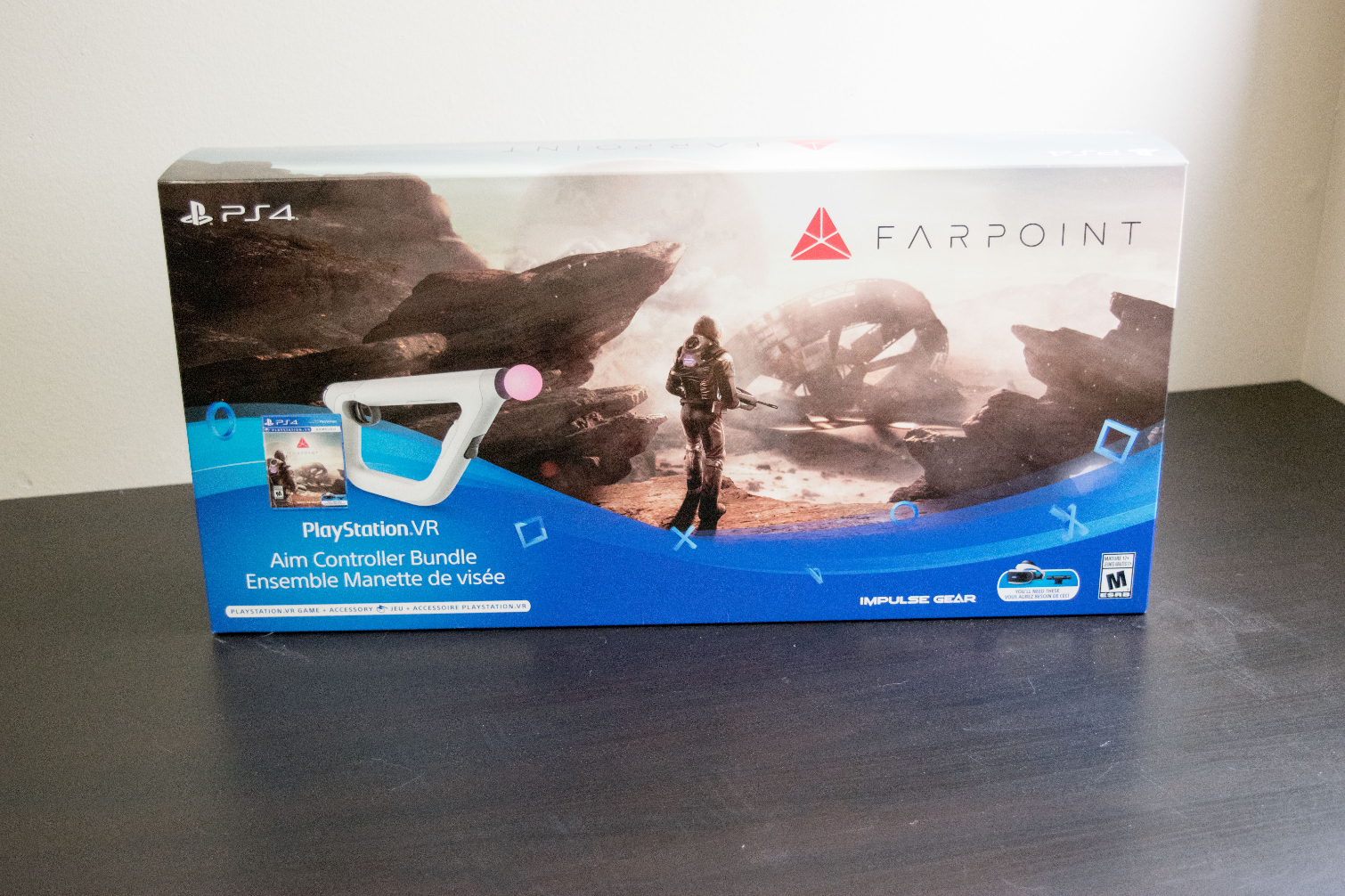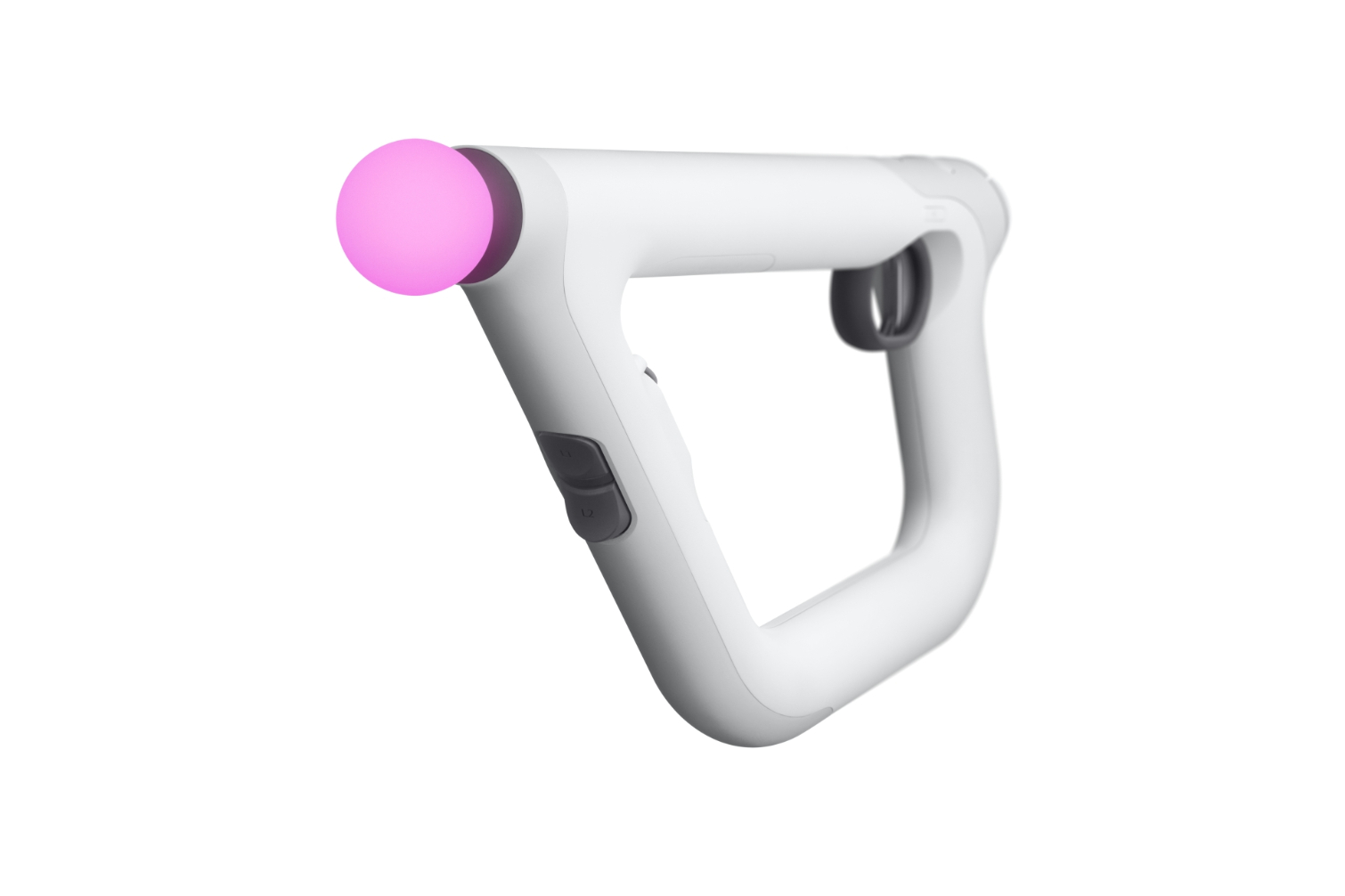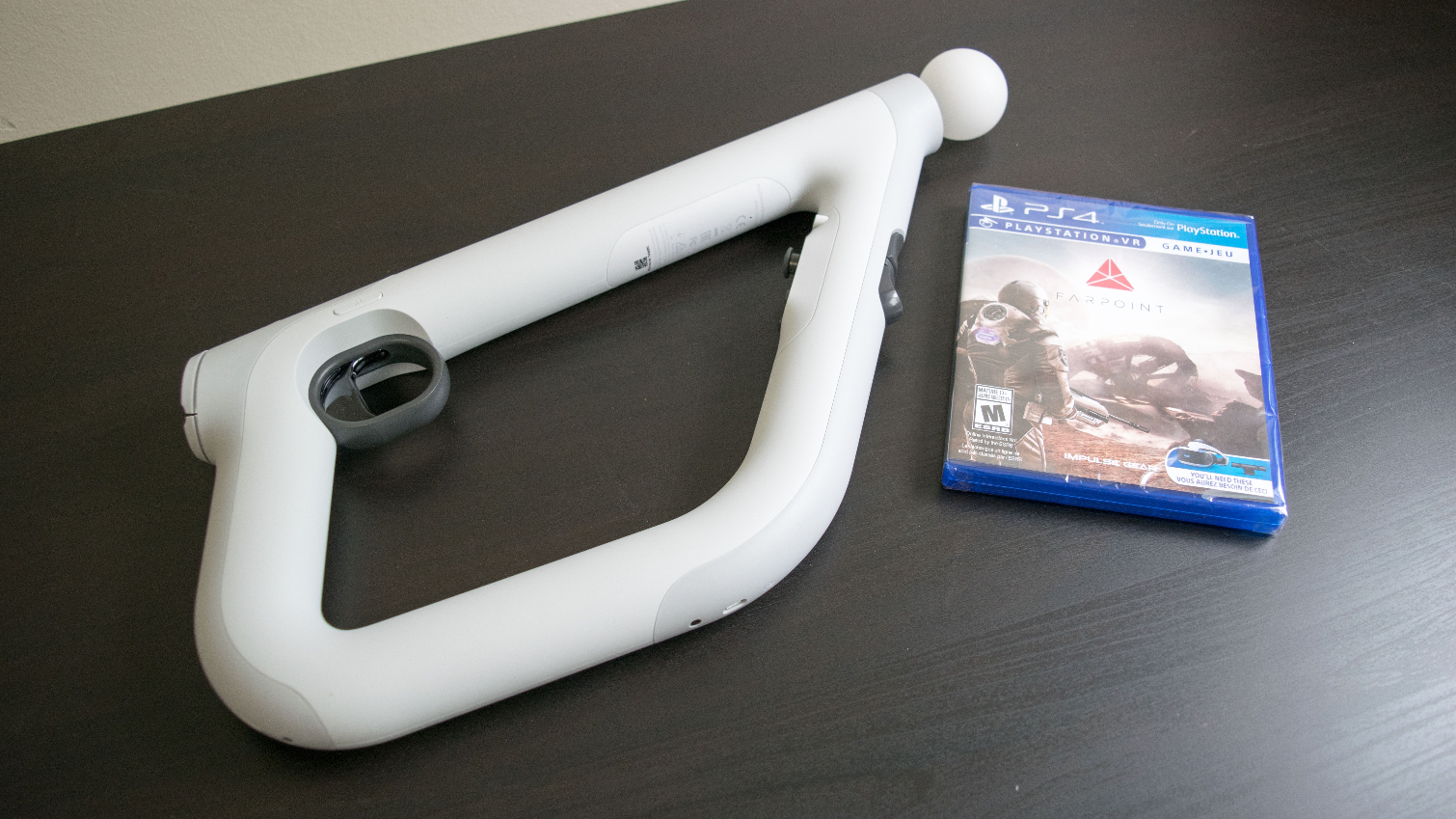Sony PSVR Aim Controller: A Great Gun Peripheral With Gamepad Buttons
Last week, Sony launched a new peripheral called the Aim Controller that complements first-person shooters in VR. The controller uses Move tracking technology and features all the buttons you would find on a DualShock 4 controller. With the Aim Controller, Sony’s PSVR is a cut above the other VR platforms for FPS games.
The Demands And Problems Of FPS In VR
First person shooters are among the most popular games on PC and console. Every year a handful of recurring first-person shooter franchises drop new installments, and you can count on a handful of completely new titles practically every year. Ever since the genre existed, developers have endeavored to create an ever-more realistic shooter experience. First-person shooters are often the games that drive graphics technology to the fringes of what’s possible on silicon. There’s a reason “Will it run Crysis?” remains a running joke.
When virtual reality first popped onto the scene, many people assumed that FPS games would take front and center stage. After all, when Palmer Luckey was looking for help in solving the last few problems with his Rift prototype, he sought the expertise of the father of the FPS genre, John Carmack. The idea of playing first-person shooters in VR was soon reinforced by The Creative Assembly when it demoed a build of Alien: Isolation in VR in January 2014 on early Oculus Rift hardware.
Alien: Isolation didn’t make its way to VR in the official release of the game, and it’s unlikely that we’ll see Zenimax-owned ID software launch an Oculus supported game anytime soon, but there’s no shortage of virtual reality FPS games available. The HTC Vive and its wand controllers lead the pack, but Oculus is catching up now that the Touch controllers are well established. Microsoft has motion controllers coming for its mixed reality (but mostly virtual reality) platform, as well.
When VR first came to the fore, developers were scared to release first-person VR games with thumbstick locomotion. VR locomotion is far from a solved problem, and the earliest VR developers established an unwritten rule that you couldn’t put the player at risk of getting sick. To avoid motion sickness triggered by vestibular mismatch, the earliest VR FPS games were standing experiences that left the player locked in place. The Brookhaven Experiment Demo and Serious Sam VR are good examples of standing VR shooters. Space Pirate Trainer is another. You can move around within your defined play space, but these games don’t offer a function to move beyond that area.
Before the Oculus Rift, HTC Vive, and PSVR hit the market, teleporting gained popularity as a comfortable locomotion alternative. Cloudhead Games created the Blink locomotion system in 2015, and many developers have since used that method or a variation thereof for their VR games. It wasn’t until Downpour Interactive released Onward that developers started to embrace smooth locomotion in VR games. Now, it’s not uncommon for VR games to offer a variety of locomotion options, including thumbstick navigation.
Although it’s always good to have options that allow you to have the gaming experience that you want, thumbstick locomotion in VR FPS titles isn’t possible with Sony’s PSVR system without a specialized device. Sony’s PSVR platform is compatible with the PlayStation DualShock 4 controllers, which offer thumbsticks for traditional locomotion input, and the PlayStation Move controllers are another option.
Get Tom's Hardware's best news and in-depth reviews, straight to your inbox.
Move controllers are ideal for shooters in that they allow you to point and aim your gun like a real one, but they don’t include a thumbstick or D-pad, so they aren’t well suited for moving you around an environment. If you want to play a game that offers both motion controls for aiming and a smooth locomotion method, a DualShock 4 or Move controller isn’t going to cut it.
Fortunately, when Impulse Gear approached Sony about that problem, Sony invited the developer to help build the controller it wished it had. Impulse Gear worked closely with Sony’s Magic Labs R&D team to create a rifle peripheral that properly complements its debut game, Farpoint. The PlayStation VR Aim controller is the result of that collaboration, and the two companies appear to have hit a home run.
Introducing PlayStation VR Aim
The PlayStation VR Aim Controller is effectively a two-handed hybrid of the Move controllers and DualShock 4 gamepad. The peripheral includes all the input buttons you could ever need in a PlayStation game combined with the 3D spatial aiming control that the Move tracking system affords.
The front of the PSVR Aim Controller features a hand grip, which rests at roughly 45 degrees from the main barrel. The front hand grip features a thumbstick and the D-pad on the inner side. You’ll also find the Share and Options buttons above the thumbstick. On the front side of the front hand grip, you’ll find the L1 and L2 buttons. The L1 button rests nearly flush with the shell of the controller. The L2 button protrudes outwards and features an analog linear actuation, like the L2 button on a Dual Shock 4 controller.
The rear of the Aim Controller features a near-vertical pistol-like grip with R2 in the place of a trigger for your index finger. On the back-side of the pistol grip, Sony installed the other thumbstick where you would traditionally find a gun’s hammer. Prominent cross, circle, triangle, and square buttons flank the thumbstick. On the top side of the Aim Controller, you’ll find the PlayStation button and an oval-shaped button that replaces the trackpad found on the Dual Shock 4 controller.
Sony engineered the Aim Controller to accommodate both right- and left-handed players. All the buttons are lined up on the center line, which makes them accessible from either hand. The R1 button is the only exception to the rule; Sony had to install them on both sides of the gun so you can reach it with your index finger from both hands.
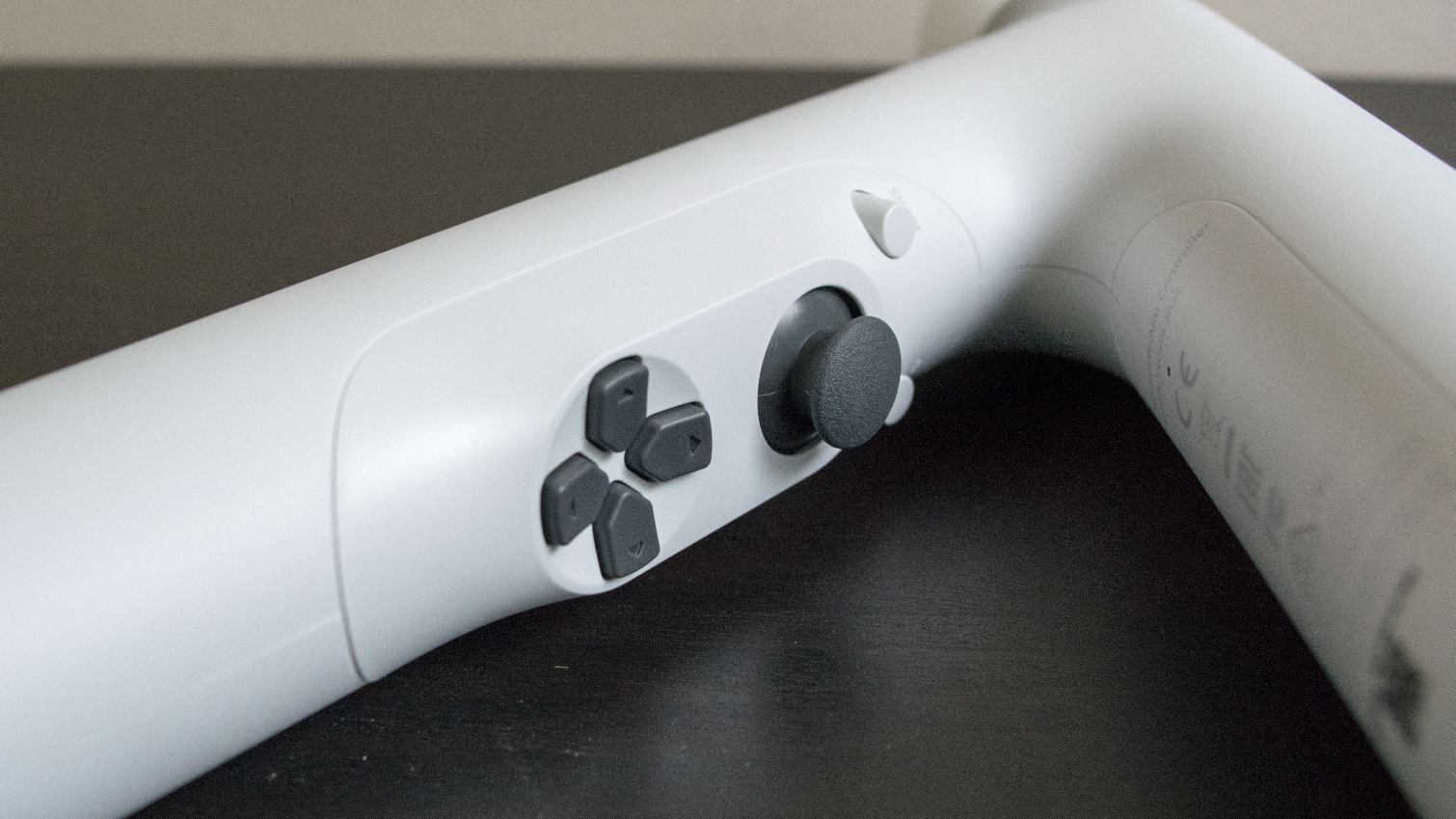
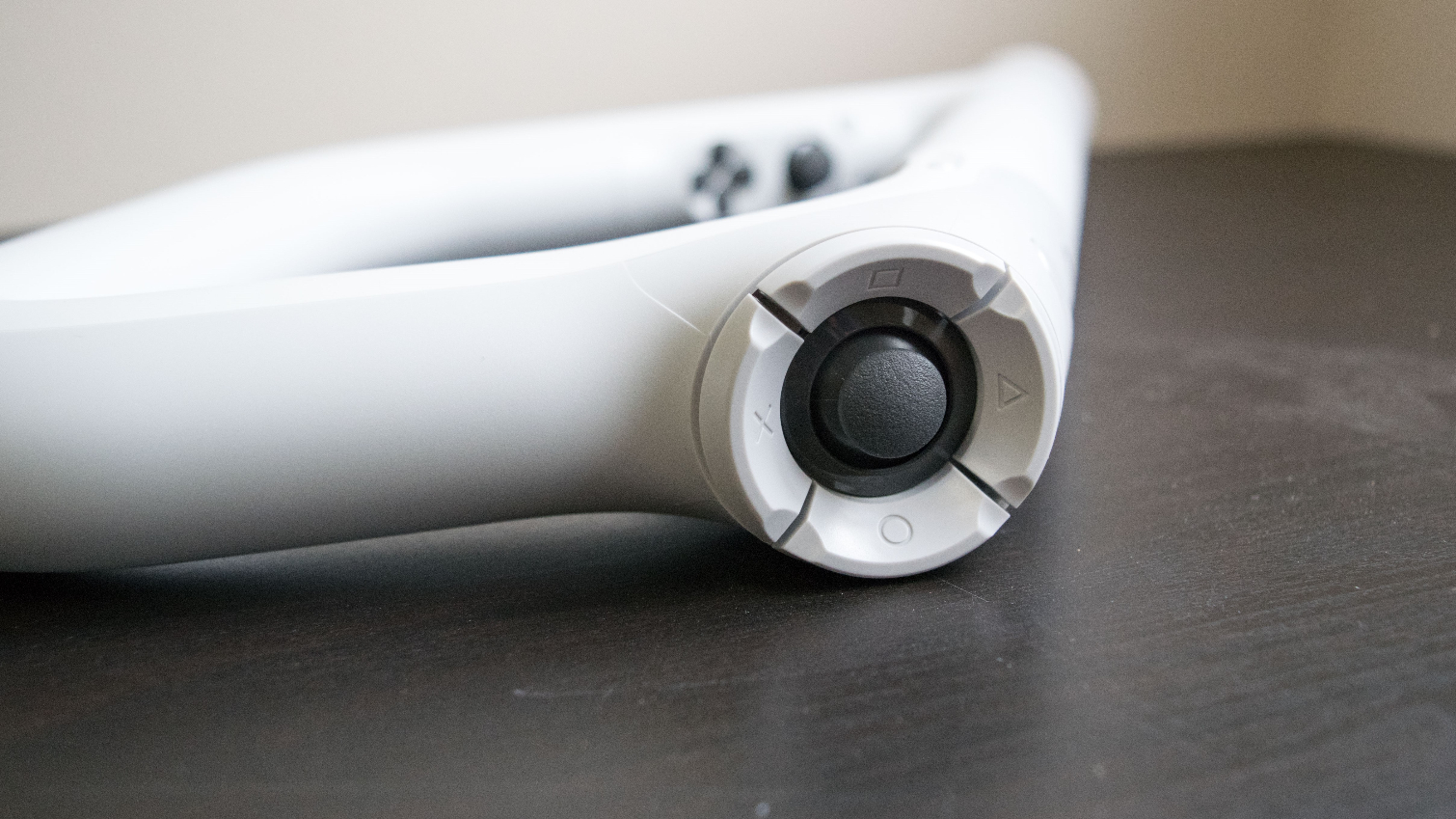
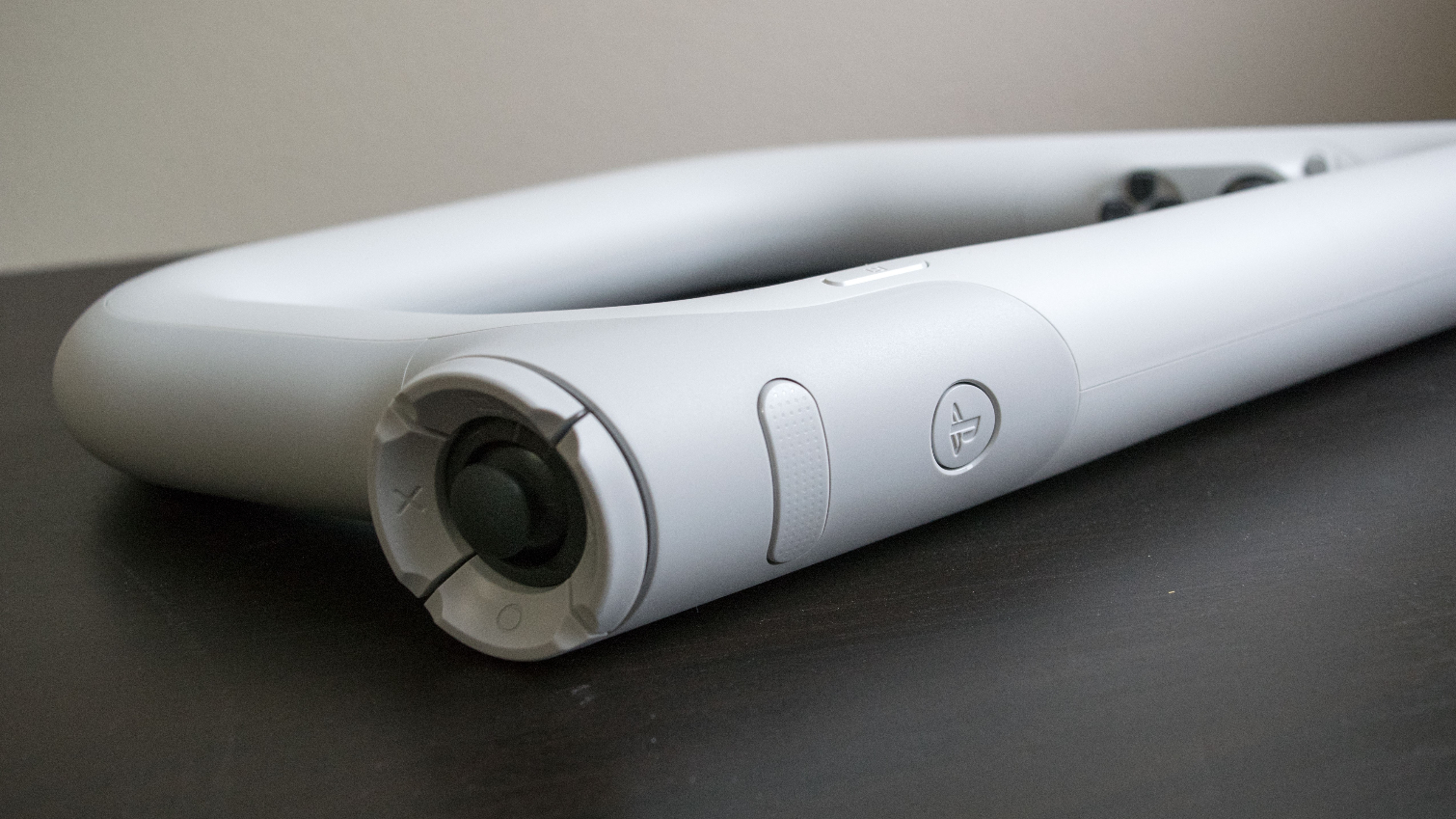
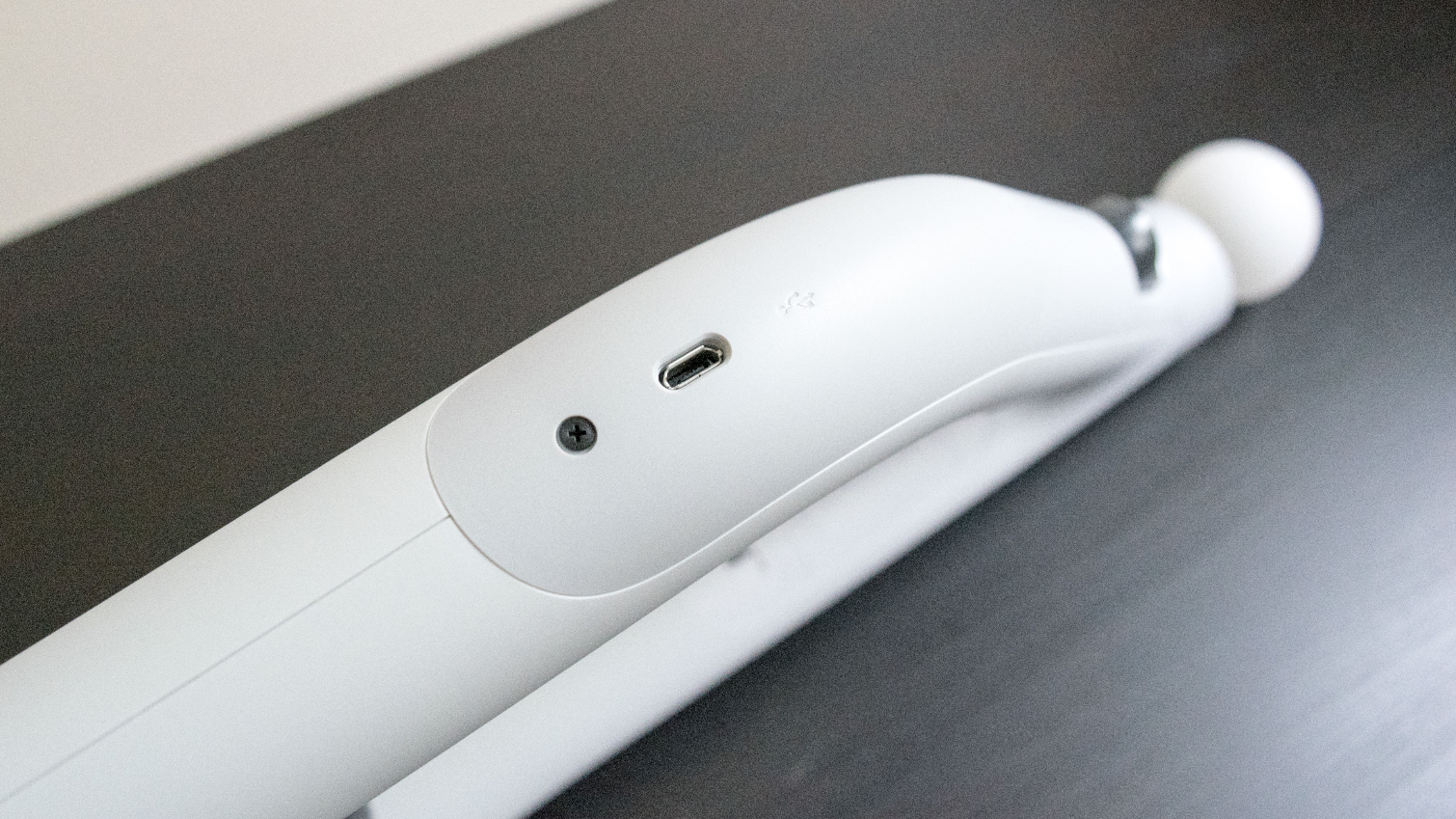
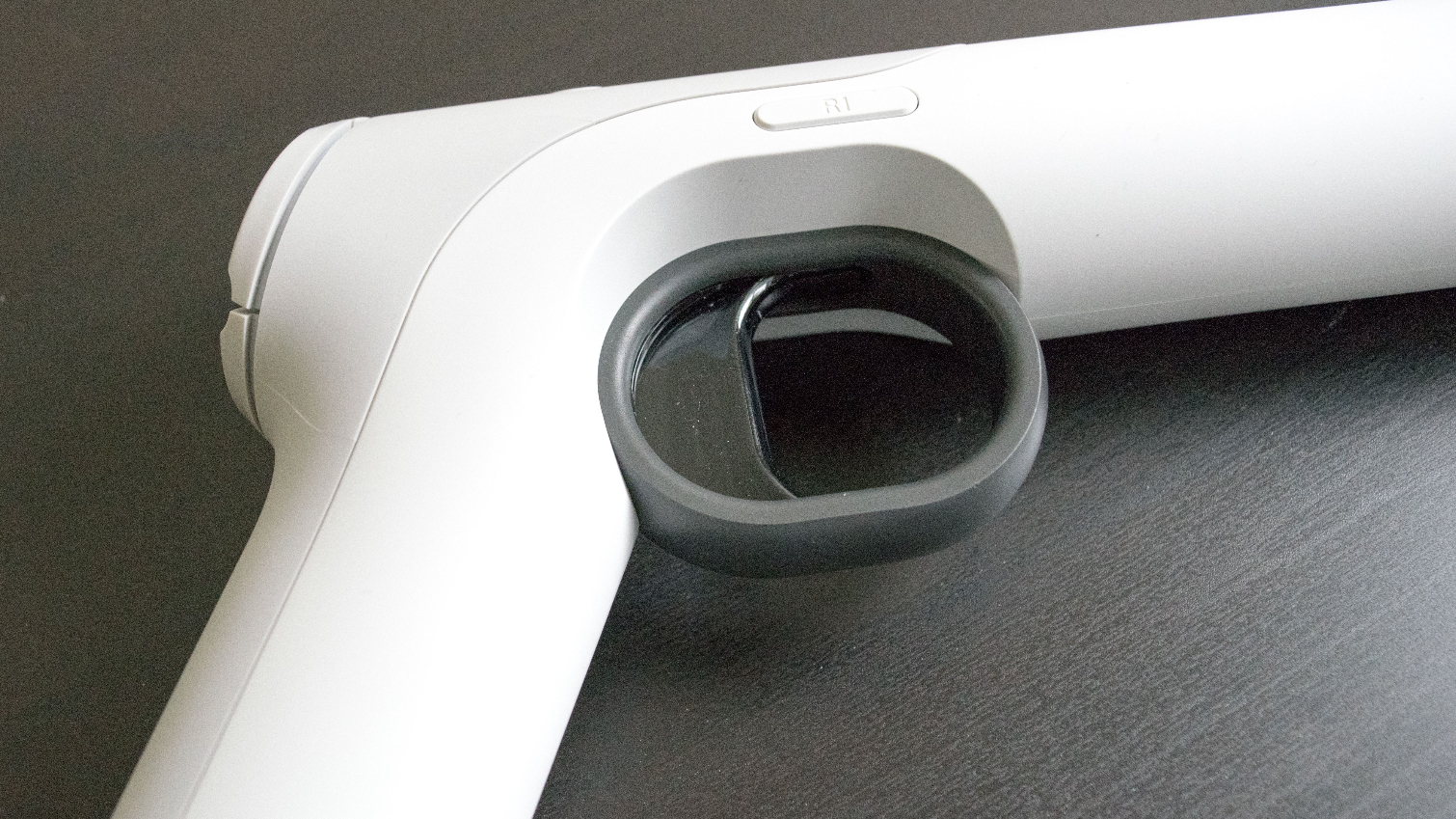
On the bottom of the Aim Controller, you’ll find the Micro-USB port used to sync the device to your PS4 console and charge the controller. There’s also a hook for a wrist strap, although Sony didn’t include one in the box. You don’t get a sync cable with the Aim Controller, either, so you’ll need the one that came with the console; a regular Micro USB cable won’t do the trick.
We should note that the controller feels impossibly light. It’s hard to imagine how that much plastic, never mind the electronics and battery inside, could weigh so little. Sony did a great job balancing the weight (what little there is) so that it remains comfortable in your hands for extended use.
When A Gun’s Not A Gun
Sony went with a toned-down visual aesthetic for the Aim Controller. The company chose to avoid as many gun-like characteristics as possible while retaining the practical functionality of a gun for in-game use. Although the Aim Controller’s primary function is to mimic a firearm, Sony tried to avoid emphasizing that fact as much as it could. The company didn’t even identify the Aim controller as a "gun" in the title of the product. Sony said it kept the design as simple as possible so that the Aim Controller could be used as “any type or form of weapon.”
Sony and Impulse Gear refined the Aim Controller and the weaponry in Farpoint to perfectly complement each other. The game developer ensured that all the weapons in the game work well with the Aim Controller. The gun peripheral features a comfortable shape and size that maps correctly to the game’s weapons without making them look disproportionate. When you hold the controller with both hands, they should line up with your avatar’s hands while it's holding a gun.
Setting Up The Aim Controller
To get started with the PSVR Aim Controller, find your USB sync cable and plug the controller into your PlayStation Console. The controller will sync to the console just like any other PS4 controller. Once you have it synchronized, you’ll be able to navigate the PlayStation dashboard with the Aim Controller. As you would expect, the controller provides the full functionality of a standard gamepad. Unlike the Move controllers, which require gestures for navigating menus, the Aim Controller lets you navigate with the thumbstick.
You must calibrate the controller’s spatial position before your aim can be accurate. Go to Adjust Tracking Lights under PlayStation VR, found in Device Settings, and follow the onscreen instructions. The process is similar to calibrating the Move controllers. You hold the colored ball up to the camera and line it up with an on-screen circle. As you hold it in place, the software will cycle through the color options of the tracking ball and select the one that's most visible to the camera. Once the calibration is complete, you can launch the game and start playing.
Superior Shooter Experience
The FPS genre isn’t going anywhere anytime soon, and as VR continues to mature, developers will figure out the best practices for those games. People are growing weary of arcade-style FPS games where you’re locked into place, and solutions like the PSVR Aim Controller are the best option thus far to deliver a proper shooter simulation. The Vive wand controllers and Oculus Touch controllers are excellent for simulating pistols, but holding your two hands in the air to mimic a shotgun or rifle leaves much to be desired. The tactile feel of a rifle peripheral goes a long way towards selling the experience.
The PSVR Aim Controller gives you all the benefits of a real two-handed weapon, such as increased accuracy and barrel stability while also offering all the input advantages of a gamepad. To be frank, Sony and Impulse Gear knocked it out of the park with the PSVR Aim Controller. Until we start to see some of the specialized rifle peripherals for the HTC Vive Tracker that should land later this year, Sony offers the most complete platform for VR Shooters. (Vive and Rift owners, though, could 3D print their own stock for a similar experience with their wand controllers.)
The PSVR Aim Controller is available as a standalone peripheral for $60, but you’d be a fool to buy it alone, because it's also available in a bundle with Impulse Gear’s Farpoint for $80. Farpoint sells without the controller for $50, so you’d save $30 by buying them together. If you don’t want Farpoint, the selection of Aim-compatible games is short; for now, you can play Dick Wilde. In June, Arizona Sunshine makes its PSVR debut, and Phosphor Games said an update for The Brookhaven Experiment is forthcoming.
Kevin Carbotte is a contributing writer for Tom's Hardware who primarily covers VR and AR hardware. He has been writing for us for more than four years.
-
Pedasc There have always been the separate navigation controllers for the move and I think there was a gun frame that you could mount them both into for Killzone 2. Is that usable at all for these games?Reply
I don't think you get the second thumb stick and button arrangement on the back but otherwise it seems fairly similar. This seems the more elegant approach but with the separate frame you can use your existing controllers. -
kcarbotte Reply19731302 said:There have always been the separate navigation controllers for the move and I think there was a gun frame that you could mount them both into for Killzone 2. Is that usable at all for these games?
I don't think you get the second thumb stick and button arrangement on the back but otherwise it seems fairly similar. This seems the more elegant approach but with the separate frame you can use your existing controllers.
The older gun peripheral is not compatible with PS4 games. I do not know why Sony chose to go that route.
you also can't get the Move controller with the thumbstick anymore and it isn't compatible with the PSVR if you have one.,
